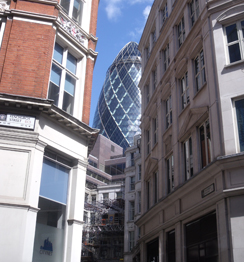In the latest security news from Professional Security, the London Problem Orientated Partnership (POP) awards showed whether you were an optimist or a pessimist. If you were an optimist, the stories as told to an audience by the six finalists left you feeling good about the work to combat crime and nuisances. If a pessimist, you went away worried that so many ‘problems’ were around. You could find evidence for either view. Some 18 entries to the awards suggest that plenty of problems are around; and who can say how many problems are just under the radar of the authorities, or go unreported entirely?
One piece of learning that Professional Security came away with was that it pays to report crime to the police, and to keep reporting; for many, if not all of the good work by the finalists was data-driven. Put another way, if the police and council community safety were not told that something was wrong by enough people, some other place would have the most calls and complaints, and resources would go there.
For all the types of crime at the awards – fireworks let off in public and at police; open drug markets; disorder at fast food restaurants and on a bus route; and distraction thefts at ATMs – police have no shortage of places to target; one after another, fire brigade style. One of the two joint winners, by police and Hammersmith and Fulham council to combat crime around the McDonald’s restaurant on Shepherd’s Bush Green, in W12, was featured in our December issue.
Safe Card
The other winner was Operation Safe Card, which sought to combat scams against people using cashpoint machines in the north London borough of Enfield; typically the elderly. Local police in Ponders End began looking into the issue, by viewing CCTV. Staff at one Barclays Bank told police that the offence was regularly happening. The bank, besides blocking the compromised card would refer victims to the Action Fraud line, in the mistaken belief that the crimes would be passed on to local police.
The Victims
Police crime recording, then, was not showing the full extent of the crime, let alone the upset to the victims, who were evidently made targets because they looked vulnerable. Some told police of how they no longer felt safe to go out. The cashpoint CCTV showed a highly organised and well-drilled team of criminals, who were carrying out the thefts across the borough.
At the awards ceremony, police showed some footage of one of the crimes. Though police did not say so, it did point to a limit in the use of CCTV; the two men committing the crime wore caps or hoods, or sunglasses and beards, as they were plainly ‘CCTV aware’ and at no time showed their face to the camera. They were also avoiding detection by using vehicles with various cloned number plates. The crime method was for one man to show the victim a leaflet, and the bank card was removed by pressing the cancel button. A second man made sure that he saw the victim’s number to use the card. Police used the SARA model to find the scale of the problem.
Some banks and supermarkets (also with ATMs outside) did not always call police or report the offence, or it did not always get recorded the same way by police; sometimes as a fraud, or theft from the person. They used the model of offender-environment- victim. The victims were often over 65 and alone; the hot-spots were ATMs, and even particular days, such as when the bank was not open for the victim to report the problem at once.
Training
Police sought to train bank staff in the crime, and to get urgent access to CCTV of any more offences. Police had to create new forms for banks to report the distraction thefts, so that police could compile a database of Enfield offences. Here was something that you joined the police for; to do good for the victims, against an organised crime network of 30 to 40 people.
Police made a spreadsheet, checked daily. They found patterns. 80% of the victims were female; most offences were on a Wednesday or Saturday. Police drew up a ‘footprint’ of the suspects. Their distraction was slick; victims had reported the criminals’ patter during the offence. Police broke up the offence into five: the unusual behaviour once the criminals arrived and scoped an ATM; they observed the victim; then did the crime and got money, commonly from the nearest machine (even next to the victim, sometimes).
The first time police tried to stop the criminals, they nearly got run over by the get-away car. The perfect outcome would be to have CCTV of the suspect, wait for him to turn up again, and allow him to commit the offence before making an arrest; and to stop the victim too, to get their statement. On a day of operations, police were also in the Enfield CCTV control room, besides response drivers acting as back-up. Police made four arrests and by the time the suspects were interviewed, police had CCTV evidence from the council, CCTV downloaded from the bank, written statements from the police and victims’ statements. The four pleaded guilty. This Security news was publicised by police on Twitter and Facebook local accounts.
Beyond Op
Police were aware that they had to do more than an operation; they put up posters at the ‘hot-spot’ ATMs, to warn of the crime, and via the charity Age UK informing people of the risk. To return to how either an optimistic or pessimistic reaction is valid; the optimist would point to the 71% reduction in offences at the hot-spots. The pessimist would make more of the fact that the criminal group from the borough of Newham is now classified as an organised crime group; in other words, it’s known to the National Crime Agency, but it’s still going.









